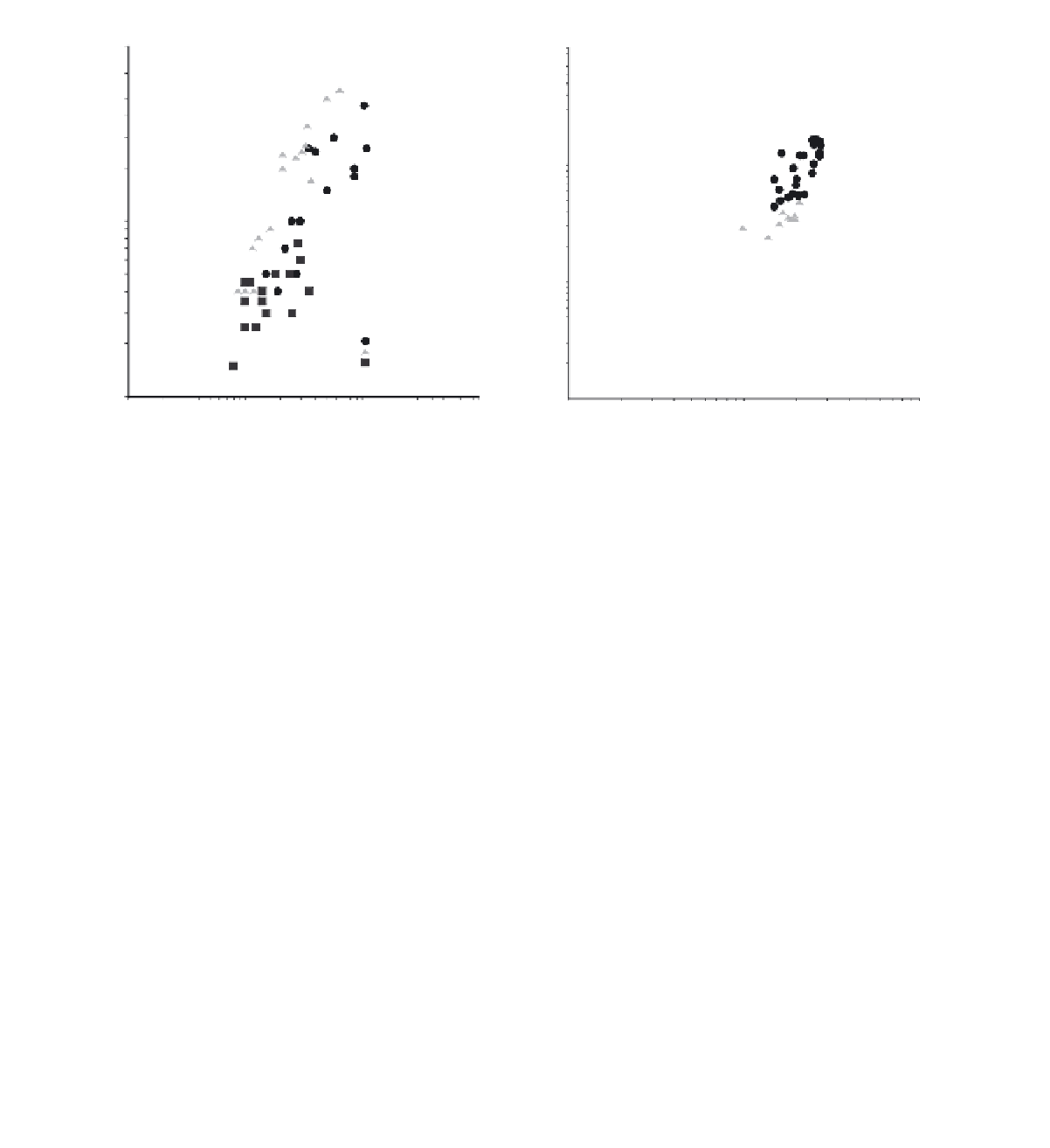Geoscience Reference
In-Depth Information
Linear Dunes
Crescentic Dunes
100
1000
100
10
10
Namib Sand Sea (complex)
Namib Sand Sea (compound)
South West Kalahari
Simpson Strzelecki
Great Sandy Desert
Namib Sand Sea
Skeleton Coast
Gran Desierto
1
1
100
1000
10000
10
100
1000
10000
Dune Spacing (m)
Dune spacing (m)
Star dunes
1000
100
10
Namib Sand Sea
Gran Desierto
1
100
1000
10000
Dune Spacing (m)
Figure 19.20
Dune height and spacing: (a) crescentic dunes, (b) linear dunes, (c) star dunes.
Fundamentally, the limits to dune size are set by the
long-term supply of sand from sources external and/or
internal to the sand sea or dune field. This is a function
of the regional setting of the sand sea and also its size, so
that large dunes almost always occur in relatively large
sand seas. Ewing and Kocurek (2010a) have documented
an increase in average dune spacing with dune field size,
which may reflect the degree to which the dune pattern
A further limiting factor on dune size may be the depth
of the atmospheric boundary layer in a region, which is
a function of the annual variation of surface tempera-
ture (Andreotti
et al.
, 2009). The depth of the boundary
layer sets a limit to megadune growth by amalgamation
and nonlinear interactions between simple or elemental
dunes. GPR and OSL dating studies show that large dunes
are the product of multiple periods of dune construction,














